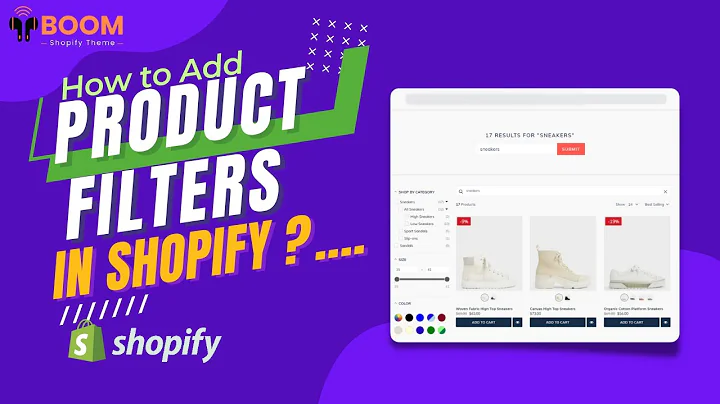The Incredible Journey of After Ship: From Startup Weekend to Global Success
Table of Contents:
- Introduction
- How It Started: The Origins of After Ship
- Quitting the Day Job: Taking the Leap into Entrepreneurship
- From Seed Funding to Series A: The Journey of Funding
- Building a Business Model: Freemium vs Premium
- Marketing Strategies: SEO and Partnerships
- The Challenges of Hiring Developers
- The Future of After Ship: Scaling and Expansion
- Competitors and Differentiating Factors
- Lessons Learned and Advice to Startups
Article: The Story of After Ship: From Startup Weekend to Global Success
Introduction
Welcome to the captivating story of After Ship, a startup that has made a significant impact in the e-commerce industry. Founded in 2011 by Andrew and Teddy, After Ship started off as a small venture with fewer than five employees. Today, it has grown into a global company that helps online merchants track millions of shipments every month. This article will take you through their journey, from the humble beginnings at a startup weekend to their success in the global market.
How It Started: The Origins of After Ship
In 2011, Andrew and Teddy participated in a startup weekend event in Hong Kong. Andrew had always been interested in the online startup space and was eager to find a co-founder with a technical background. It was during this event that Teddy pitched his idea for a software that would help merchants with package tracking. Andrew was immediately intrigued by the concept and agreed to work together on the idea.
Quitting the Day Job: Taking the Leap into Entrepreneurship
After winning the startup weekend competition, Andrew and Teddy decided to pursue their idea full-time. Andrew faced the dilemma that many aspiring entrepreneurs face - when to quit the day job and commit fully to the startup. For him, winning the competition provided the validation and hope that the idea could work. He weighed the pros and cons and ultimately made the decision to quit his job and focus on After Ship.
From Seed Funding to Series A: The Journey of Funding
In 2012, After Ship received its seed funding from investors they met at a conference in Singapore. The investors were interested in the unique concept of After Ship and saw its potential in the e-commerce industry. This initial funding allowed them to further develop the product and launch it to the market. In 2019, After Ship secured its Series A funding from a renowned investor, further propelling their growth and expansion plans.
Building a Business Model: Freemium vs Premium
After Ship offers a freemium business model, where merchants can access basic tracking services for free, with the option to upgrade to a premium plan for additional features. This model has proved to be successful, as it allows small and medium-sized merchants to track their shipments without incurring significant costs. The conversion rate from free users to paid users has been high, as merchants recognize the value of the premium services.
Marketing Strategies: SEO and Partnerships
One of After Ship's most successful marketing strategies has been its focus on search engine optimization (SEO). By targeting keywords related to package tracking, such as carrier names and tracking information, After Ship has been able to drive organic traffic to its website. Additionally, they have formed partnerships with popular e-commerce platforms like Shopify and Magento, allowing them to reach a broader customer base.
The Challenges of Hiring Developers
As After Ship continues to grow, hiring talented developers has become a priority. However, finding the right candidates with the necessary skills and mindset has proven to be a challenge. Andrew emphasizes the importance of hiring developers who are willing to learn and possess a strong desire for growth. They are also looking for senior-level developers who can guide their development process and provide valuable insights.
The Future of After Ship: Scaling and Expansion
After Ship has experienced impressive growth, tracking millions of shipments per month. Moving forward, they plan to focus on enhancing the speed and accuracy of their tracking services. They aim to become a platform that integrates with various carriers, providing merchants with a seamless shipping experience. By offering an all-in-one solution for package tracking, After Ship aims to revolutionize the logistics industry.
Competitors and Differentiating Factors
While there are competitors in the market, After Ship differentiates itself by focusing on the B2B segment of the market. Their scalable and user-friendly platform caters to the needs of online merchants, especially those who rely on multiple carriers. After Ship's ability to handle large volumes of shipments and provide a unified tracking experience sets them apart from their competitors.
Lessons Learned and Advice to Startups
After Ship's journey has taught Andrew many valuable lessons. He emphasizes the importance of finding the right co-founder who complements your skills and shares your vision. It is crucial to focus on the product and validate the idea before seeking external validation. Andrew also advises startups to attend conferences and events, as they provide an opportunity to learn from others and get challenged.
Highlights:
- After Ship, a startup founded by Andrew and Teddy, has gained global recognition in the e-commerce industry for its package tracking services.
- The journey of After Ship started at a startup weekend event in Hong Kong, where Andrew and Teddy met and decided to work together on the concept.
- Andrew made the decision to quit his day job and commit full-time to After Ship after winning a startup weekend competition.
- After Ship received seed funding in 2012 and secured series A funding in 2019 to support its growth and expansion plans.
- After Ship operates on a freemium business model, allowing merchants to track shipments for free with the option to upgrade to a premium plan for additional features.
- Their marketing strategy focuses on search engine optimization (SEO) and strategic partnerships with e-commerce platforms like Shopify and Magento.
- Hiring talented developers has been a challenge for After Ship, but they prioritize finding candidates who are willing to learn and possess a growth mindset.
- After Ship plans to scale and expand its services by offering an all-in-one platform for package tracking and integrating with various carriers.
- Their focus on the B2B segment and ability to handle large volumes of shipments sets them apart from competitors.
- Key lessons learned include the importance of finding the right co-founder, focusing on the product, and attending conferences for learning and networking opportunities.
FAQ:
Q: How does After Ship make money?
A: After Ship operates on a freemium business model. Basic tracking services are available for free, while additional features are offered under a premium plan for a fee.
Q: How does After Ship track shipments from multiple carriers?
A: After Ship integrates with various carriers and provides merchants with a single API to display tracking information from multiple carriers on their websites.
Q: Can After Ship track packages in different languages?
A: After Ship supports multiple languages and provides tracking results in the preferred language of the user.
Q: What sets After Ship apart from its competitors?
A: After Ship focuses on the B2B segment and caters to the needs of online merchants who rely on multiple carriers. They have built a scalable and user-friendly platform for tracking shipments.
Q: Is After Ship planning to expand into the Chinese market?
A: Currently, After Ship's focus is not on the Chinese market. They have integrated carriers primarily from outside China and are not ready to enter the Chinese market at this time.
Q: How does After Ship handle customer support requests?
A: After Ship receives customer support emails primarily from merchants. They strive to provide prompt, helpful responses to merchants' inquiries and troubleshoot any issues they may face.
Q: Is After Ship considering applying for patents to protect their technology?
A: After Ship currently does not apply for patents. They prioritize focusing on the product and serving their customers rather than pursuing patent protection.
Q: How does After Ship handle the recurring payments from merchants?
A: After Ship uses a recurring payment system where merchants pay based on the number of shipments they track. Payment is deducted automatically for each shipment.
Q: What are After Ship's future plans for growth and expansion?
A: After Ship aims to enhance its tracking services and build a platform that allows merchants to ship with any carriers. They plan to continuously evolve and adapt to the changing needs of the e-commerce industry.
Q: How does After Ship handle the large volume of customer emails?
A: After Ship receives a significant number of customer support emails, which vary in complexity. They prioritize responding to merchants' inquiries and providing them with the necessary information to address any concerns or issues they may have.
Q: Does After Ship have any plans to develop their own e-commerce platform?
A: After Ship's primary focus is on the package tracking aspect of e-commerce. They currently do not have plans to develop their own e-commerce platform, as they prefer to collaborate with existing platforms like Shopify and Magento.






















